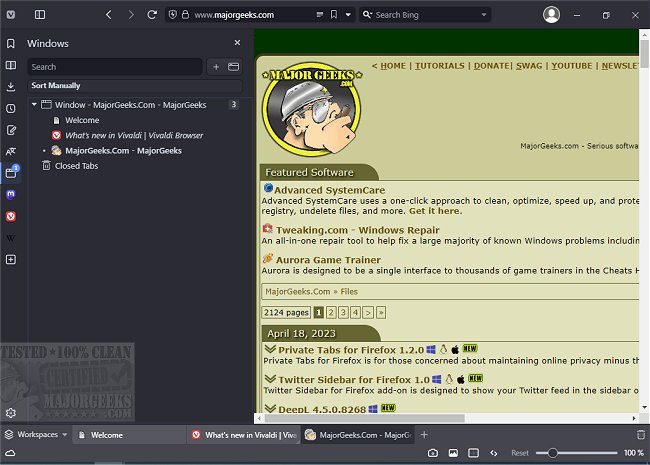Vivaldi has recently released version 7.5.3735.74 of its web browser, which is developed by the original founders of the Opera Web Browser, dating back to 1994. This free browser is available for both Windows and Linux systems, and users can download the beta version for testing.
The interface of Vivaldi bears similarities to Google Chrome, featuring standard navigation buttons such as forward, back, refresh, and home, conveniently placed next to the address bar. New tabs can be opened with a simple click on the "+" icon, while existing tabs can be closed using the "X" icon. Vivaldi also includes a sidebar that allows for quick access to bookmarks, downloads, contacts, and notes, although the mail feature is still in development.
One criticism of the design is the placement of the options gear icon, which some users feel would be more intuitive if relocated to the top right corner or incorporated into the sidebar. Vivaldi offers flexibility in how web pages are displayed, allowing users to toggle between showing or hiding images and even adjust the rendering of pages through various filters and zoom options. This feature is particularly beneficial for users who face difficulties reading online content.
As Vivaldi enters a competitive browser market, it remains to be seen whether it can carve out a significant niche among users who are often loyal to their preferred browsers. Despite its somewhat cumbersome name, Vivaldi's unique features and customization options may position it as a contender for wider adoption in the future.
Looking ahead, Vivaldi could enhance its appeal by continuing to develop user-friendly features that cater to specific needs, such as improved accessibility tools, integration with popular web applications, and performance enhancements. Additionally, fostering a strong community around the browser could help drive user engagement and loyalty, potentially making Vivaldi a significant player in the web browsing landscape
The interface of Vivaldi bears similarities to Google Chrome, featuring standard navigation buttons such as forward, back, refresh, and home, conveniently placed next to the address bar. New tabs can be opened with a simple click on the "+" icon, while existing tabs can be closed using the "X" icon. Vivaldi also includes a sidebar that allows for quick access to bookmarks, downloads, contacts, and notes, although the mail feature is still in development.
One criticism of the design is the placement of the options gear icon, which some users feel would be more intuitive if relocated to the top right corner or incorporated into the sidebar. Vivaldi offers flexibility in how web pages are displayed, allowing users to toggle between showing or hiding images and even adjust the rendering of pages through various filters and zoom options. This feature is particularly beneficial for users who face difficulties reading online content.
As Vivaldi enters a competitive browser market, it remains to be seen whether it can carve out a significant niche among users who are often loyal to their preferred browsers. Despite its somewhat cumbersome name, Vivaldi's unique features and customization options may position it as a contender for wider adoption in the future.
Looking ahead, Vivaldi could enhance its appeal by continuing to develop user-friendly features that cater to specific needs, such as improved accessibility tools, integration with popular web applications, and performance enhancements. Additionally, fostering a strong community around the browser could help drive user engagement and loyalty, potentially making Vivaldi a significant player in the web browsing landscape
Vivaldi 7.5.3735.74 released
Vivaldi is a free web browser from the original Opera Web Browser founders in 1994, designed for Windows and Linux. Download the beta version here.


